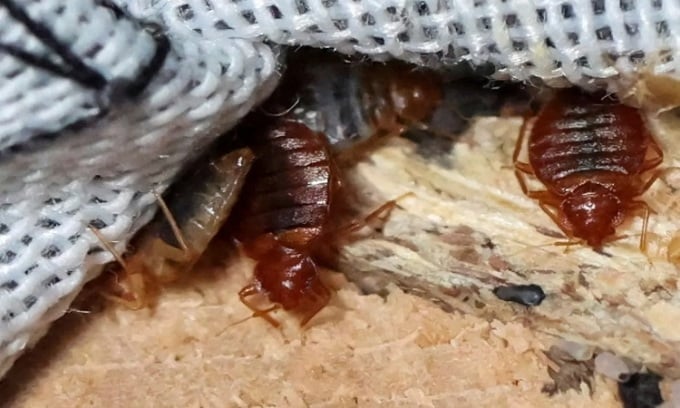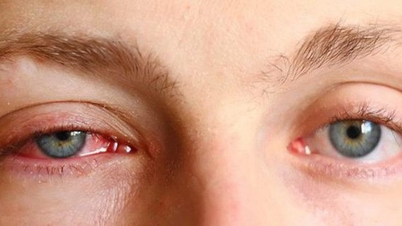France Pesticide resistance and spread through travel make bed bugs a difficult problem to tackle for Paris authorities.

Bed bugs nest in fabrics and furniture padding. Photo: Guardian
Videos have flooded social media and news headlines of bedbugs crawling everywhere in Paris, from subway seats to reclining seats in cinemas. The insects are causing concern across Paris and around the world due to the number of tourists who come to the city and could return home with blood-sucking bugs. “No one is safe,” the deputy mayor of Paris said on Twitter during Paris Fashion Week.
While bed bugs can be pests, they don’t spread disease and are more likely to cause itchy discomfort than pose a serious health threat. Bed bugs were virtually extinct from the 1940s to the late 1990s due to the use of pesticides, but they have reemerged in recent years, with outbreaks in nearly every major city, including New York and Hong Kong. The situation in Paris may not be an outbreak, but it is evidence of a long-standing problem and an example of how effectively bed bugs can survive, according to National Geographic .
Anyone who has ever encountered bed bugs in their own home knows that their bites can cause itchy, painful bumps. They are also incredibly difficult to eradicate because they nest inside fabrics and furniture padding. A single bed bug typically lives only a few months, or a year in some cases. But that's plenty of time for a population to explode, says Zachary DeVries, an urban entomologist at the University of Kentucky. "You can release a single female bug into your home, and she'll mate and quickly start a population that can grow out of control in a matter of weeks or months," DeVries says.
Bed bugs are a group of about 100 species of small parasitic insects that feed on the blood of warm-blooded animals. Only three species of these insects bite humans, the most common being Cimex lectularius. Adult bed bugs are reddish-brown, wingless, and only about 0.6 cm long, about the size of an apple seed. They are often mistaken for other bloodsuckers such as fleas, but can be distinguished by their flat, oval bodies.
Bed bugs have been a problem since human history began, DeVries says. Their remains have been found in Egyptian tombs dating back more than 3,500 years. But where did they first come from? Scientists aren't sure of the earliest ancestors of bed bugs, but a leading theory for the emergence of modern bed bugs is that they evolved with bats. "200,000 years ago, when people lived in caves with bats, a species of bed bugs latched onto them," says Coby Schal, an entomologist at the University of North Carolina. "When people left the caves, that species of bed bugs followed."
Once bed bugs find their target, they insert a syringe-like tube attached to their tip into the skin to suck up warm blood. They also inject a series of proteins into the bite, including anesthetics and anticoagulants. While they don’t carry disease, bed bug saliva can cause allergic reactions in some people, leaving large, itchy welts. Others may not even realize they’re living with bed bugs because their skin doesn’t react, Schal said.
Through a tactic called traumatic insemination, adult male bed bugs insert their sickle-shaped penis into the female’s abdomen and inject sperm directly into her body. The sperm travel through the female’s circulatory system to the uterus, where they fertilize her eggs. How they evolved this reproductive mechanism remains a mystery, says William Hentley, an ecologist at the University of Sheffield in the UK.
Over time, female bed bugs have evolved a specialized organ in their abdomen called a spermalege that contains immune cells that help prevent infection at the wound site. After a rough mating session, female bed bugs typically lay 1-7 eggs per day, which hatch into pupae. The pupae go through five developmental stages before reaching adulthood, although they must feed on blood to complete each molt.
Humans have tried countless times throughout history to control bed bug outbreaks. One of the most successful efforts occurred during World War II, when the now-banned insecticide DDT was widely distributed to kill bed bugs. The chemical was initially very effective in controlling them. In the 1990s, a new population of bed bugs that were immune to DDT began to spread.
The problem has been exacerbated by the rise in global travel in recent decades, allowing the bloodsuckers to travel around the world and find new hosts every day. As a result, bed bug populations have grown rapidly, and many have become resistant to commercial insecticides. Exterminators often rely on heat, as bed bugs will die if exposed to temperatures of 43.3 degrees Celsius for at least 90 minutes.
An Khang (According to National Geographic )
Source link



![[Photo] National Assembly Chairman Tran Thanh Man attends the VinFuture 2025 Award Ceremony](/_next/image?url=https%3A%2F%2Fvphoto.vietnam.vn%2Fthumb%2F1200x675%2Fvietnam%2Fresource%2FIMAGE%2F2025%2F12%2F05%2F1764951162416_2628509768338816493-6995-jpg.webp&w=3840&q=75)
![[Photo] 60th Anniversary of the Founding of the Vietnam Association of Photographic Artists](/_next/image?url=https%3A%2F%2Fvphoto.vietnam.vn%2Fthumb%2F1200x675%2Fvietnam%2Fresource%2FIMAGE%2F2025%2F12%2F05%2F1764935864512_a1-bnd-0841-9740-jpg.webp&w=3840&q=75)









































































































Comment (0)